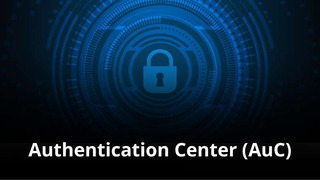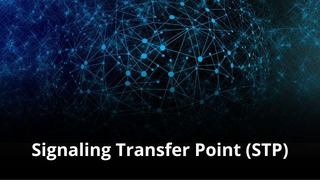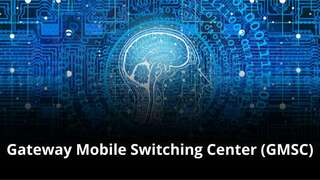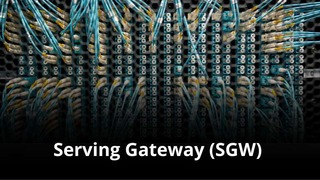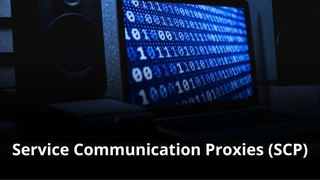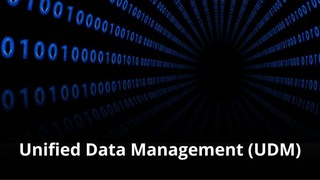Introduction about the Authentication Server Function (AUSF)
The Authentication Server Function (AUSF) is a critical security-focused network element in the 5G Core (5GC) architecture. It serves as the primary entity responsible for authenticating the subscriber’s device and verifying their credentials before granting them access to the mobile network. The AUSF is essential for maintaining network integrity and ensuring that only legitimate users can connect to 5G services.
What are the details of an Authentication Server Function (AUSF)?
- History and Evolution of the Authentication Center
- Core Utility and Functionality of the AUSF
- Technical Integration and Data Model
- AUSF Ownership for MVNOs and IoT Companies
- Organizational Impact of AUSF Ownership?
- Redundancy and High Availability
- Impact of 4G, 5G, and 6G on the AUSF
- Frequently Asked Questions about the AUSF
- Summary
History and Evolution of the Authentication Server Function
In 2G through 4G LTE networks, the functions of the Authentication Server were typically integrated within the HLR/HSS (or the separate AuC function). The 5G Core, however, follows the principle of Control and User Plane Separation (CUPS) and Service-Based Architecture (SBA). The AUSF was introduced as a standalone, lightweight Network Function (NF) dedicated solely to security and authentication logic. This separation allows the AUSF to be highly scalable and independently deployed, enhancing overall network security and resilience against signaling attacks. The evolution is:
Core Utility and Functionality of the AUSF
What is the AUSF Used For?
The Authentication Server Function (AUSF) is used to perform the initial Authentication and Key Agreement (AKA) procedures for any 5G device (UE) attempting to attach to the network. It receives authentication requests from the Access and Mobility Management Function (AMF) and acts as a security broker, coordinating with the UDM to obtain the cryptographic material necessary to prove the subscriber’s identity. Implementing an AUSF is necessary for a 5G-enabled Full MVNO to control its own security policy.
Key Functions of the Authentication Server Function
Investigate the core functions of the Authentication Server Function (AUSF):
- Key Derivation: If authentication is successful, the AUSF derives the root security key and sends the necessary security context back to the AMF.
- Security Context Acquisition: Communicates with the UDM to fetch the subscriber’s 5G authentication vectors (cryptographic material used to verify the SIM card).
- Authentication Vector Processing: Processes the Authentication Vectors and runs the authentication algorithms to verify the response from the UE.
- Authentication Control: Receives authentication requests from the AMF and initiates the appropriate AKA (Authentication and Key Agreement) procedure to challenge the UE (User Equipment).
- Extensible Authentication Support: Designed to support various authentication methods beyond the standard 5G-AKA, such as EAP-TLS for non-SIM-based access or specialized IoT protocols.
Technical Integration and Data Model
The Authentication Server Function (AUSF) interacts primarily with two key 5G core network functions (NFs) over the Service-Based Interface (SBI) using HTTP/2:
- AMF (Access and Mobility Management Function): The AMF is the client that initiates the authentication request to the AUSF (via the Nausf interface). It receives the security keys and the authentication result back from the AUSF.
- UDM (Unified Data Management): The AUSF queries the UDM (via the Nudm interface) to retrieve the subscription-specific Authentication Vectors needed to perform the challenge-response authentication with the UE.

Technical Data Model and Key Interfaces
The AUSF does not store permanent subscriber data. Its model is highly dynamic and temporary, focused on the active security session:
- Session State: Stores the temporary 5G-AKA state, including the challenge sent and the expected response, during the authentication procedure.
- Security Context: Holds the derived security keys which are crucial for subsequent communication security. This context is short-lived and securely transferred to the AMF upon successful authentication.
AUSF Ownership for MVNOs and IoT Companies
Why Own an AUSF?
For a Full MVNO or any provider leveraging 5G for specialized IoT services, owning the Authentication Server Function (AUSF) provides direct, independent control over the front door of the network. Consider that the AUSF guarantees that the cryptographic keys used to secure the user’s communication are managed solely by the MVNO, giving them ultimate control over SIM authentication and security policy, regardless of the host MNO‘s radio access network.
Advantages and Disadvantages of AUSF Ownership
Security Autonomy: Full control over 5G-AKA algorithms and key derivation.
Cloud-Native Resilience: Highly scalable CNF deployment allows the AUSF to easily handle millions of concurrent authentication attempts.
Specialized Authentication: Ability to implement custom or non-SIM-based authentication methods for IoT and enterprise solutions (EAP-based).
Zero Tolerance for Error: A misconfigured AUSF will prevent all subscribers from accessing the network.
Performance Requirement: Must be extremely fast (low latency) as it is in the direct path of every user’s network attachment process.
Requires UDM Ownership: The AUSF is useless without an MVNO-owned UDM to provide the required authentication vectors.
Organizational Impact of AUSF Ownership
Analyzing the impact of integrating an AUSF (Authentication Server Function ):
Technical Impact: The AUSF must be deployed with high-speed, low-latency HTTP/2 integration to the UDM and AMF as it is in the direct path of every network attachment. Its cloud-native architecture facilitates deployment on container platforms (Kubernetes), simplifying scaling but adding DevOps complexity.
Financial Impact: Involves moderate CapEx for specialized software licenses and deployment on secure cloud infrastructure. The financial value is in risk mitigation; owning the AUSF minimizes MNO fees for authentication services and shields the MVNO from the massive financial and reputation costs associated with a security breach or SIM cloning incident.
Security Impact: The AUSF is a high-value target for security threats as it manages the key exchange process. Robust signaling firewalls, strict access control, and denial-of-service (DoS) protection are mandatory to ensure the integrity of the network’s 5G-AKA procedures.
Operational Impact: Requires DevOps teams with deep expertise in 5G security protocols and cryptography. Strict, automated processes are needed for key management, key rotation, and the secure transfer of derived keys to the AMF.
Redundancy and High Availability

Due to its critical role as the network’s security gatekeeper, the AUSF must be deployed with high availability. Implement an active-active N+N clustered architecture, geographically redundant if possible. Since the AUSF is largely stateless (it relies on the UDM for the persistent data), achieving quick failover is simpler than with stateful components. The focus must be on ensuring the AUSF cluster can sustain massive authentication signaling load without introducing latency.
Future Trends and the AUSF
As networks evolve toward 6G, the role of the AUSF will likely expand to become an AI-enhanced security orchestration function. Anticipate that future authentication systems will use Machine Learning (ML) to rapidly analyze behavioural and contextual data (e.g., location, time of day, device type) to dynamically adjust the required authentication rigor, moving beyond static AKA challenges to ensure “zero-trust” network security.
Frequently Asked Questions about the Authentication Server Function (AUSF)
1. What is the AUSF's primary role in a 5G network?
To perform the initial authentication of the user’s SIM card and device (UE) by verifying credentials and generating the necessary security keys.
2. Which two other 5G functions does the AUSF mainly interact with?
The AMF (Access and Mobility Management Function) initiates the request, and the UDM (Unified Data Management) provides the cryptographic Authentication Vectors.
3. What is the core security procedure the AUSF manages?
The Authentication and Key Agreement (AKA) procedure, which is the challenge-response mechanism used to verify the SIM card’s authenticity.
4. Why is the AUSF a separate function in 5G, unlike in 4G?
It follows the 5G Service-Based Architecture (SBA) principle to separate security logic from data storage, making the AUSF highly scalable and independently deployable as a cloud-native function (CNF).
5. What does the AUSF send to the AMF after a successful authentication?
The AUSF sends the authentication result and the derived root security key needed to secure further communication between the UE and the network.
Summary
The Authentication Server Function (AUSF) is the dedicated security NF in the 5G Core responsible for validating subscriber identity and deriving security keys. Owning the AUSF is a non-negotiable step for a 5G-ready Full MVNO, granting the organization ultimate control over network access security, SIM management, and the ability to implement advanced, customized authentication methods.

